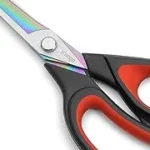Have you ever wondered why Chilean sea bass comes with such a hefty price tag? This sought-after fish has become synonymous with luxury dining, but what makes it so expensive? In this article, we will delve into the factors that contribute to the high cost of Chilean sea bass, from its limited availability to the complex process of sourcing and catching it. Get ready to uncover the secrets behind this prized delicacy and gain a deeper understanding of why it commands such a premium in the culinary world.
The first key factor behind the exorbitant price of Chilean sea bass is its scarcity. Native to the cold waters of the Southern Ocean, this species is known for its slow growth rate and low reproductive capacity. With strict fishing regulations in place to protect its population, the supply of Chilean sea bass is limited, driving up its price in the market. Additionally, the remote and treacherous fishing grounds where it is found further contribute to its high cost, as it requires specialized equipment and skilled fishermen to harvest it.
Why is Chilean Sea Bass so Expensive?
Chilean Sea Bass, also known as Patagonian toothfish, is renowned for its delicate flavor and buttery texture, making it a highly sought-after fish in the culinary world. However, several factors contribute to its high price:
1. Limited Availability: Chilean Sea Bass is mainly sourced from the Southern Ocean surrounding Antarctica, where it is caught in deep waters. The remote and harsh environment makes it challenging to fish, resulting in limited supply.
2. Strict Regulations: To protect the sustainability of the species, fishing for Chilean Sea Bass is heavily regulated. Quotas are established to prevent overfishing and ensure the long-term survival of the species. These regulations limit the amount of fish that can be caught, further reducing supply.
3. Slow Growth and Reproduction: Chilean Sea Bass has a slow growth rate and late reproductive maturity, which contributes to its scarcity. It can take up to 10 years for a Chilean Sea Bass to reach a harvestable size, making it a slow-renewing resource.
4. High Demand: The exquisite taste and texture of Chilean Sea Bass have made it a favorite among chefs and seafood enthusiasts worldwide. The high demand, coupled with limited supply, drives up the price in the market.
5. Costly Fishing Methods: Catching Chilean Sea Bass requires specialized equipment and vessels capable of withstanding the harsh conditions of the Southern Ocean. These factors increase the cost of fishing, which is ultimately reflected in the price of the fish.
What are the environmental concerns associated with Chilean Sea Bass?
While Chilean Sea Bass is a popular choice for its taste, there are environmental concerns associated with its consumption:
1. Overfishing: Due to its high demand and slow reproductive rate, overfishing has been a significant issue for Chilean Sea Bass. Unsustainable fishing practices can deplete the population, leading to long-term damage to the species and the ecosystem it inhabits.
2. Bycatch: The fishing methods used to catch Chilean Sea Bass often result in significant bycatch, which refers to the unintentional capture of other marine species. This can include endangered or vulnerable species, leading to negative impacts on biodiversity.
3. Habitat Destruction: Bottom trawling, a fishing method commonly used for Chilean Sea Bass, involves dragging nets along the seafloor. This practice can cause damage to delicate marine habitats, such as coral reefs and seamounts, disrupting the ecosystem and impacting other species.
4. Illegal Fishing: Despite strict regulations, illegal, unreported, and unregulated (IUU) fishing of Chilean Sea Bass still occurs in some regions. IUU fishing undermines conservation efforts and contributes to the depletion of fish stocks.
5. Conservation Efforts: To address these concerns, various organizations, governments, and fishing industry stakeholders have implemented measures to promote sustainable fishing practices, such as improved monitoring, stricter regulations, and certifications like the Marine Stewardship Council (MSC) certification to ensure responsible fishing and protect the long-term viability of Chilean Sea Bass.
What is the taste and texture of Chilean Sea Bass?
Chilean Sea Bass is renowned for its distinct taste and luxurious texture:
With a mild, delicate flavor, it offers a rich and buttery taste that is often compared to a combination of halibut and cod. This flavor profile makes it highly versatile in various culinary preparations.
The texture of Chilean Sea Bass is often described as moist, tender, and melt-in-your-mouth. The fish’s high oil content contributes to its luscious texture, making it a favorite among seafood enthusiasts and chefs alike.
What is the best cooking method for Chilean Sea Bass?
Chilean Sea Bass can be cooked in various ways to bring out its exceptional flavor and texture:
1. Pan-Searing: Searing Chilean Sea Bass in a hot pan with a bit of oil creates a crispy outer layer while keeping the inside moist and tender. This method works well for fillets or steaks.
2. Grilling: Grilling Chilean Sea Bass imparts a smoky flavor and beautiful grill marks. The high oil content helps prevent the fish from sticking to the grill, making it an excellent choice for barbecues.
3. Baking: Baking Chilean Sea Bass in the oven with some herbs, spices, and a drizzle of olive oil is a simple and flavorful option. This method allows for easy seasoning and ensures even cooking.
4. Steaming: Steaming Chilean Sea Bass preserves its delicate flavor and moist texture. This gentle cooking method is ideal for those who prefer a lighter and healthier preparation.
Regardless of the cooking method chosen, it is crucial not to overcook Chilean Sea Bass to preserve its tenderness and prevent it from becoming dry.
Can Chilean Sea Bass be sustainably sourced?
Yes, it is possible to source Chilean Sea Bass sustainably by considering several factors:
1. MSC Certification: Look for Chilean Sea Bass products that bear the Marine Stewardship Council (MSC) certification. The MSC certification ensures that the fish has been sourced from a well-managed fishery and meets specific sustainability criteria.
2. Responsible Fishing Practices: Choose suppliers and brands that prioritize responsible fishing practices. This includes adherence to catch limits, avoiding bycatch, minimizing habitat damage, and supporting efforts to combat illegal fishing.
3. Traceability: Seek out suppliers or retailers that provide information about the fish’s origin and the methods used to catch it. Transparent supply chains help ensure that the fish has been sourced legally and sustainably.
4. Seasonality: Consider the seasonal availability of Chilean Sea Bass. Opting for fish that is in season reduces the likelihood of overfishing and allows for natural population replenishment.
By being mindful of these factors, consumers can support sustainable fishing practices and contribute to the long-term conservation of Chilean Sea Bass.
What are some alternative fish options to Chilean Sea Bass?
If you’re looking for alternatives to Chilean Sea Bass, consider these sustainable options:
1. Black Cod (Sablefish): Black Cod, also known as Sablefish, offers a similar buttery texture and rich flavor to Chilean Sea Bass. It is sustainably sourced and has a lower environmental impact.
2. Halibut: Halibut is a versatile whitefish with a firm texture and mild flavor. It can be used as a substitute for Chilean Sea Bass in various recipes.
3. Striped Bass: Striped Bass is a popular choice among seafood lovers due to its delicate flavor and flaky texture. It is often considered a sustainable alternative to Chilean Sea Bass.
4. Arctic Char: Arctic Char is a cold-water fish with a mild, delicate flavor. It has a texture similar to salmon and can be prepared in various ways.
5. Rainbow Trout: Rainbow Trout is a sustainable choice that offers a delicate flavor and tender texture. It is readily available and can be cooked in a variety of methods.
Remember to check for sustainability certifications and choose fish that are sourced responsibly to ensure you are making an environmentally conscious choice.
What is the origin of Chilean Sea Bass?
Chilean Sea Bass, also known as Patagonian toothfish, is native to the cold waters of the Southern Ocean surrounding Antarctica. It is found in the sub-Antarctic and Antarctic regions, particularly near the coasts of Chile and Argentina.
The name “Chilean Sea Bass” was coined by a fish wholesaler in the United States in the 1970s as a marketing term to make the fish more appealing to American consumers. The name change from Patagonian toothfish to Chilean Sea Bass helped increase its popularity and demand in the culinary world.
How can I identify Chilean Sea Bass?
Identifying Chilean Sea Bass can be done using the following characteristics:
1. Appearance: Chilean Sea Bass has a distinctive appearance with a dark gray to blackish color on the outside and a lighter, sometimes white, color on the inside. The fish has a sleek and elongated body with a large head and mouth.
2. Size: Chilean Sea Bass can reach impressive sizes, with adults typically ranging from 30 to 60 inches in length. The weight of fully grown individuals can vary from 15 to 200 pounds.
3. Scales: The skin of Chilean Sea Bass is covered with small scales that are easily removed. When purchasing fillets or steaks, the scales are usually already removed.
4. Teeth: Despite its name, Chilean Sea Bass does not have prominent teeth. The name “toothfish” refers to its tooth-like structures that line the inside of its mouth.
If unsure about the identification, it is recommended to seek guidance from a trusted fishmonger or refer to reputable sources for visual references.
Can Chilean Sea Bass be farmed?
Although there have been attempts to farm Chilean Sea Bass, it is a challenging species to cultivate in captivity. Several factors contribute to the difficulty in farming this fish:
1. Complex Life Cycle: The life cycle of Chilean Sea Bass involves a long larval stage, making it challenging to rear the fish from eggs to juveniles in captivity. The specific conditions required for successful rearing have not yet been fully understood.
2. Nutritional Needs: Chilean Sea Bass has specific dietary requirements that are difficult to replicate in farming environments. Providing the right balance of nutrients, particularly the high oil content the fish requires, presents a significant challenge.
3. Space and Environmental Factors: Chilean Sea Bass requires ample space and specific environmental conditions, including cold water temperatures, to thrive. Creating suitable farm environments that mimic the natural habitat of the fish is complex and costly.
Due to these challenges, the majority of Chilean Sea Bass available in the market is still sourced from wild-caught populations.
What are the nutritional benefits of Chilean Sea Bass?
Chilean Sea Bass offers several nutritional benefits:
1. Protein: It is an excellent source of high-quality protein, which is essential for muscle growth and repair, as well as overall health and well-being.
2. Omega-3 Fatty Acids: Chilean Sea Bass is rich in omega-3 fatty acids, particularly eicosapentaenoic acid (EPA) and docosahexaenoic acid (DHA). These fatty acids are known for their potential cardiovascular and anti-inflammatory benefits.
3. Minerals: It contains essential minerals such as selenium, magnesium, and phosphorus, which play vital roles in various bodily functions.
4. Vitamins: Chilean Sea Bass is a good source of vitamins B6, B12, and niacin, which are involved in energy metabolism and brain function.
As with any food, moderation is key. It is important to consider the overall balance of nutrients in one’s diet and consult with a healthcare professional regarding individual dietary needs.
What is the shelf life of Chilean Sea Bass?
The shelf life of Chilean Sea Bass depends on various factors:
1. Freshness: When purchased fresh, Chilean Sea Bass should be consumed within 1 to 2 days to ensure optimal flavor and quality. Proper storage and refrigeration at temperatures below 40°F (4°C) are essential.
2. Freezing: If properly packaged and frozen, Chilean Sea Bass can retain its quality for up to 6 months. It is important to follow recommended freezing guidelines and ensure the fish is protected from freezer burn.
3. Quality of Purchase: The quality of the fish at the time of purchase also plays a role in its shelf life. Choosing a reputable supplier or fishmonger known for providing fresh and high-quality products can help ensure a longer shelf life.
It is always recommended to check the fish’s appearance, smell, and texture before consumption, regardless of its stated shelf life, to ensure it is still fresh and safe to eat.
Is Chilean Sea Bass safe to eat?
When sourced from reputable suppliers and handled properly, Chilean Sea Bass is safe to eat. However, it is essential to follow food safety guidelines:
1. Storage: Store Chilean Sea Bass in the refrigerator at temperatures below 40°F (4°C) and consume it within the recommended time frame to prevent spoilage and bacterial growth.
2. Proper Cooking: Ensure that Chilean Sea Bass is cooked to a safe internal temperature of 145°F (63°C) to eliminate any potential pathogens or parasites that may be present.
3. Source: Purchase Chilean Sea Bass from trusted suppliers or fishmongers who adhere to proper handling, storage, and transportation practices.
4. Allergies and Sensitivities: As with any seafood, individuals with allergies or sensitivities should exercise caution and consult with a healthcare professional if uncertain.
By following these guidelines, consumers can enjoy Chilean Sea Bass safely.
What are the health risks associated with eating Chilean Sea Bass?
While Chilean Sea Bass is generally safe to eat, there are a few health risks to consider:
1. Mercury Content: Like many large predatory fish, Chilean Sea Bass can accumulate mercury in its flesh. High levels of mercury can be harmful, particularly for pregnant women, nursing mothers, and young children. It is advisable for these individuals to limit their consumption of Chilean Sea Bass and choose low-mercury alternatives.
2. Allergies: Some individuals may have allergies or sensitivities to fish, including Chilean Sea Bass. Allergic reactions can range from mild to severe, and it is important to be aware of personal allergies and seek medical advice if necessary.
3. Sensitivity to Environmental Contaminants: As Chilean Sea Bass is a wild-caught fish, it may be exposed to environmental contaminants such as polychlorinated biphenyls (PCBs) or dioxins. Individuals with known sensitivities to these contaminants should consider their overall exposure and consult with a healthcare professional if concerned.
It is recommended to consume Chilean Sea Bass in moderation and consider individual dietary needs and potential health risks.
What is the Chilian Sea Bass price range?
The price of Chilean Sea Bass can vary depending on various factors:
1. Location: Prices may differ based on the region or country where the fish is purchased. Local availability and market demand can influence the price.
2. Freshness: Freshly caught Chilean Sea Bass typically commands a higher price due to its premium quality and limited availability.
3. Fillets vs. Whole Fish: The price can also vary depending on whether the fish is sold as whole fish or fillets. Filleted fish tends to be more expensive due to the additional labor involved in processing.
4. Supplier and Brand: Different suppliers and brands may have varying pricing strategies based on their reputation, quality, and sourcing practices.
Due to these factors, the price of Chilean Sea Bass can range from $20 to $50 per pound or even higher in some cases.
Is Chilean Sea Bass a sustainable seafood choice?
Chilean Sea Bass is not considered a sustainable seafood choice overall due to concerns surrounding its population status and fishing practices. However, efforts have been made to improve its sustainability:
1. MSC Certification: Some fisheries have achieved Marine Stewardship Council (MSC) certification, indicating that they meet specific sustainability criteria. Look for Chilean Sea Bass products with the MSC label to support responsible fishing practices.
2. Improving Fishing Practices: Organizations and fishing industry stakeholders are working to
“Chilean Sea Bass” Is Actually This Heavily Poached Fish
In conclusion, the high price of Chilean sea bass can be attributed to several key factors. Firstly, its limited availability plays a significant role. Due to overfishing and strict regulations, the population of Chilean sea bass has greatly declined, making it more challenging to catch. This scarcity drives up the price as demand outweighs supply.
Secondly, the unique flavor and texture of Chilean sea bass contribute to its popularity and price. Known for its rich, buttery taste and delicate, flaky texture, this fish offers a culinary experience that is highly sought after by seafood enthusiasts and fine dining establishments alike. The exceptional quality of Chilean sea bass elevates its value in the market.
Lastly, the cost of sourcing and distributing Chilean sea bass adds to its expensive price tag. The fish is primarily caught in remote areas, such as the Southern Ocean and the Antarctic, which requires long and costly journeys for fishermen. Additionally, strict regulations and sustainable fishing practices further increase the cost of production and transportation.
In summary, the high price of Chilean sea bass can be attributed to its limited availability, exceptional taste and texture, and the cost associated with sourcing and distributing this prized fish. These factors combine to create a demand-driven market where the rarity and quality of Chilean sea bass justify its expensive price.






